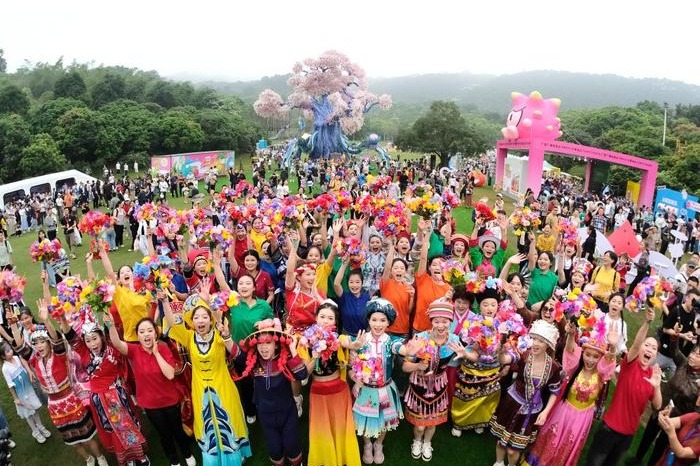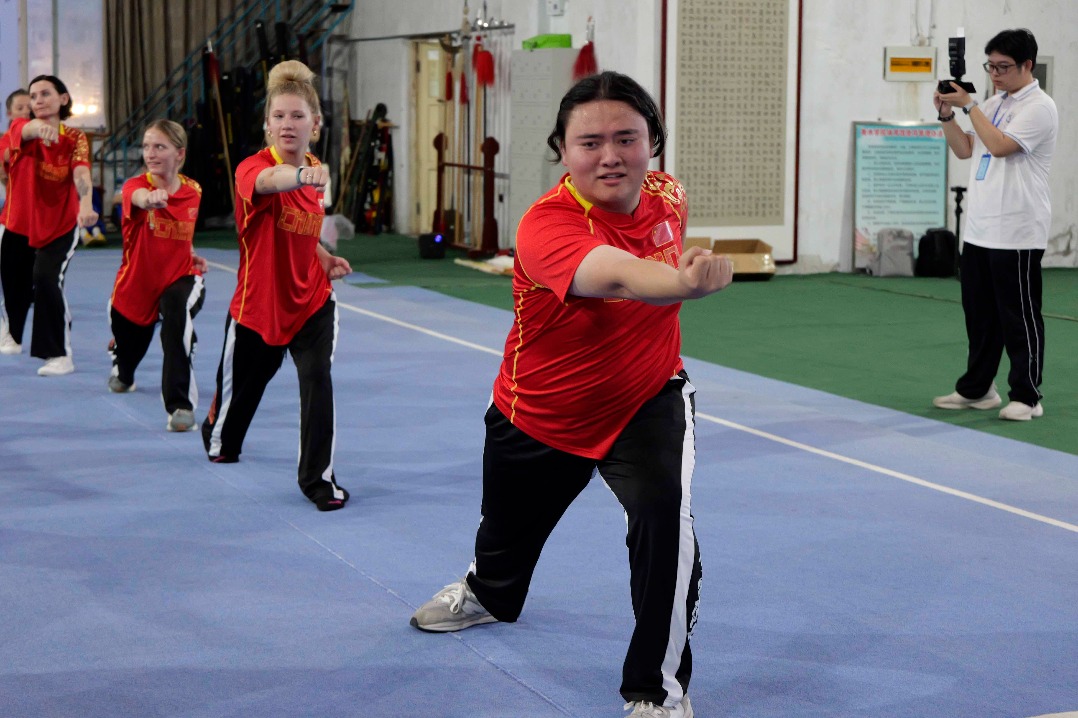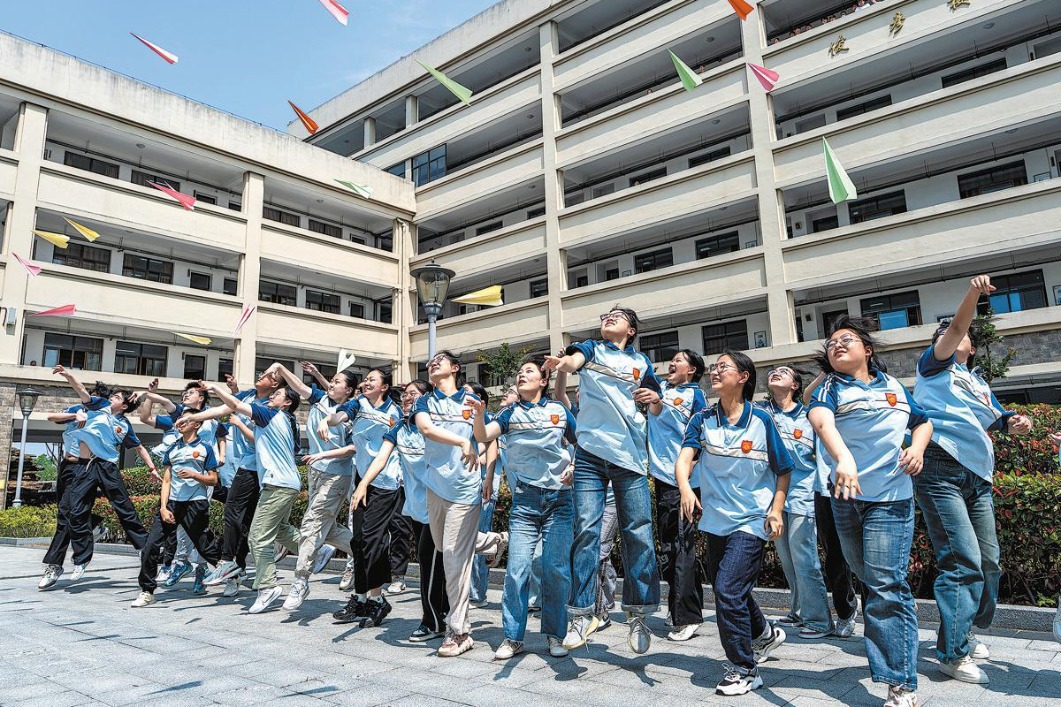Braving challenges, CPC to lead China to new economic success


BEIJING -- The Communist Party of China, the world's largest political party, celebrated its 99th birthday as the country is consolidating its economic recovery amid the COVID-19 epidemic.
Official data shows activities in many Chinese industries, from auto manufacturing to e-commerce, are returning to pre-epidemic levels. Given the country's solid pace of recovery, Fitch Ratings on Monday raised its 2020 GDP forecast for China to 1.2 percent from 0.7 percent.
The recovery is hard won, though. For months, the COVID-19 epidemic, coupled with lingering trade tensions and weak external demand, has been testing the economic governance capacity of the CPC, which led the country to transform from a vastly impoverished agricultural land into the world's second-largest economy with better-off people.
Based on the valuable experience it has accumulated over the past decades, the CPC will steer the country toward a healthier and long-term growth through deepening reform and widening opening-up, analysts say.
QUALITY MATTERS MORE IN TOUGH DAYS
After four decades of breakneck expansion, the CPC has been pushing China's economy to transition to high-quality development, putting emphasis on greener and more sustainable growth.
China lowered its economic growth targets over the past few years, and even set no target for this year, showing the country is relying less on using GDP to measure success.
"This marks a great shift in the leadership's development philosophy, which will continue to have far-reaching impacts on economic and social life," said Gao Peiyong, vice president of the Chinese Academy of Social Sciences.
In a bid to push forward high-quality development, China has given less weight to traditional high-polluting and high energy-consuming industries even though they are vital sources of jobs and tax revenues.
Instead, the country has doubled down on support for new drivers of growth such as high-end equipment manufacturing, modern services and high-tech industries.
Even in the first quarter when the novel coronavirus epidemic pushed China's economy into its first contraction in decades, the country still avoided launching a massive stimulus and maintained a tight grip over the property sector.
Further, rather than embarking on traditional infrastructure investment programs, China is seeking more targeted investments in "new infrastructure" such as 5G networks, big data centers and other projects that facilitate innovation and improve weak links in economic and social development.
"Expanding investment in new infrastructure is not a stopgap. It will not only boost consumption and benefit the people, but also facilitate structural adjustments and enhance the sustainability of growth," said Liu Duo, head of the China Academy of Information and Communications Technology.
REFORM KEY TO ECONOMIC SUCCESS
Chinese policymakers innovatively started the reform and opening-up policy in 1978 to eliminate the constraints of a planned economy, nurture private sectors and advance state-owned enterprise reforms step by step.
To unleash economic growth, the government has been pressing ahead with reforms to reduce corporate burdens, transform government functions and cut red tape.
A total of 2.36 trillion yuan (about $337 billion) of taxes and fees were cut in 2019 for businesses, well above the original target of 2 trillion yuan, with manufacturing and micro and small businesses benefiting most.
In the face of the COVID-19 epidemic, the country has not slowed its pace of reforms toward expanding marketization.
In May, China issued a guideline to accelerate the improvement of its socialist market economy, pledging to improve the market, policies, the rule of law and the social environment for supporting the development of private businesses and foreign-invested enterprises.
Thanks to the deepening of reforms, the country's entrepreneurial enthusiasm ran high and the market vitality stayed unabated despite downward pressures and trade tensions, with 20,000 new businesses being set up each day on average last year.
The process of reforms is far from complete. The advancing supply-side structural reform will inject new impetus to the economy, analysts say.
EMBRACING OUTSIDE WORLD
Along with the sustained efforts to invigorate the domestic economy via market reforms, the CPC has been consistent in pushing opening-up step by step.
"Unlike many Western countries, where policy initiatives are often overturned once an administration changes, China's policies have always been consistent with effective implementation, providing stable expectations for firms," said Zhao Lei, a professor with the Party School of the Central Committee of the CPC.
The CPC has been leading China's opening-up through trial and error. Pilot reforms were carried out in free trade zones designed to test water for new modes of international cooperation. The number of sectors that are off-limits for foreign investors was gradually reduced over the years as the country further opened up.
In its latest efforts to open the economy, China unveiled a new negative list for foreign investment in late June, cutting the number of sectors that are off-limits for foreign investors to 33 from 40 in 2019.
At a time when protectionism and anti-globalization sentiments rise, the CPC's opening-up push is facing unprecedented challenges.
Despite the impact of the COVID-19 pandemic, the country has reiterated that it would continue to broaden market access and open up its service sector, vowing supportive measures to shore up foreign investment and trade.
"Many thought that China would hit the brake on promoting the Belt and Road Initiative amid the pandemic, but the country has been unwaveringly advancing it, as evidenced in the recent High-level Video Conference on Belt and Road International Cooperation," Zhao said.
Under the CPC's leadership, China is becoming ever more confident in the international market, shifting its role from merely a participant to an active builder of globalization by pushing for the establishment and development of multilateral institutions, he said.
- Xi's upcoming visit to advance China-Central Asia community with shared future
- China's J-10CE fighter jet showcased at Paris Air Show
- HKSAR to unveil second policy statement on digital assets
- Top political advisor stresses jointly guarding Taiwan Strait peace
- Meet Guardians of the 'Desert Oasis'
- PLA conducts patrol in South China Sea, on high alert for destabilizing activities





































